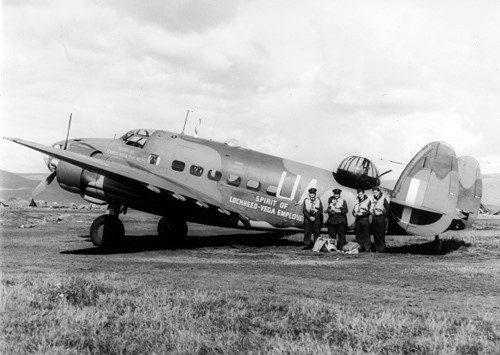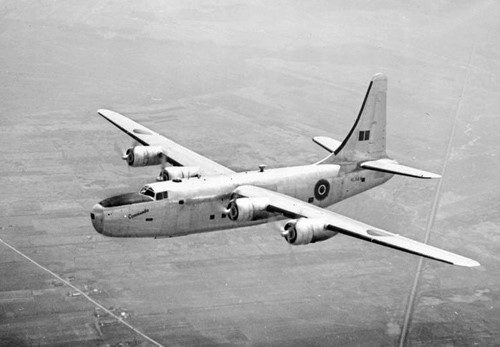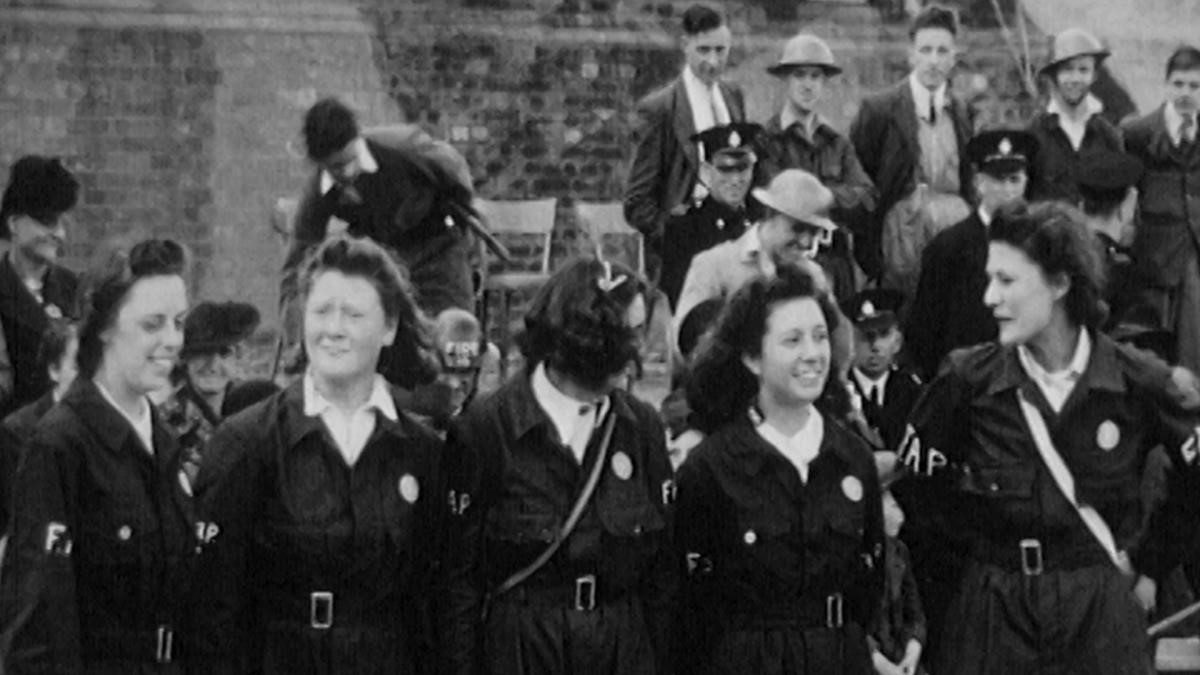By Jeffrey P. Rhodes, Lockheed Martin Communications and Aeronautics History
A look back at Lockheed Martin’s role in the British war effort as we approach the 75th Anniversary of VE Day on 8 May 2020.
The Hudson is probably the most well-known Lockheed Martin aircraft flown by the Royal Air Force during World War II - but ‘Old Boomerang’ is but a small part of Lockheed’s fascinating wartime history with the UK. From 1939 to 1945, Lockheed Martin precursors the Lockheed Aircraft Corporation, the Glenn L. Martin Company and Consolidated Aircraft Corporation (later Consolidated-Vultee Aircraft) supplied no less than 12 different aircraft types to the UK Air Ministry.
To cope with the huge increase in demand created by the war, Lockheed also operated out of at least six bases in the UK, with local employees working on aircraft assembly, modification and repair. The bases were an important early milestone in a proud 80-year history of industrial partnership that continues today. Lockheed Martin UK currently operates from more than 20 locations across the country, with around 2,000 employees, and works with more than 1,000 UK companies in its supply chain.
Utility Transport
The first aircraft to be flown during the war was a Lockheed Model 10 Electra belonging to British Airways (later known as BOAC), which was impressed into service by the RAF on 3 September 1939, the day Britain declared war on Germany. A further seven or eight Electra’s were used later in the war, with one transferred to India to serve as the personal transport of the Governor of Bengal.
The RAF also operated three different versions of another transport aircraft, the Lockheed Lodestar. The RAF ‘officially’ had 70 Lodestars, but civil Lodestars flown by British Airways (BOAC) were often used on clandestine missions. Many of the Lodestars flown were flown in BOAC colours with RAF serial numbers.
The 'Old Boomerang'

The Hudson built by Lockheed Martin employees in their spare time as a gift for the RAF
In 1938 the RAF placed an order for 550 of the Lockheed Hudson – at $25m, this was at the time the largest single order ever received by an American aircraft manufacturer.
More than 2,000 Hudson Mk. I, II, III, IV and Vs were received by the RAF from 1938 to 1942, about 70 per cent of Hudson production. Lockheed employees were so grateful for the work that they donated part of their wages, and their time, to build an extra Hudson as a gift for the RAF, The Spirit of Lockheed-Vega Employees. The aircraft flew as part of 269 Squadron.
The RAF nicknamed the Hudson the ‘Old Boomerang’ because they usually came back, even when shot up or damaged. The Hudson was the first England-based aircraft to shoot down a German aircraft (a Dornier Do-17, in 1939). Hudson crews also patrolled the beaches over Dunkirk in 1940, reportedly strafing the advancing Germany army, and an RAF crew flying a Hudson bombed a German U-boat into surfacing and surrendering in August 1941.
Pleased with the success of the Hudson, the RAF ordered 675 Ventura Mk I and II - known by the RAF as the Vega Ventura and built at the Vega plant next door to Lockheed’s main Burbank facility. The Ventura entered service on 31 May 1942, and was flown by 12 RAF squadrons and by Commonwealth forces, with one Royal New Zealand Airforce pilot receiving the Victoria Cross while flying a Ventura in May 1943.
Lockheed Lightning and the Dambusters
The Lightning was an early precursor to today’s most advanced fighter, the Lockheed F-35 Lighting II, currently Lockheed Martin’s largest production programme.
Following an order in 1940 by the Anglo-French Purchasing Commission, and originally intended for France, the RAF ultimately received just three Lightning I’s. The F-35 is currently being flown by 17 Test and Evaluation Squadron and the 617 Squadron of ‘Dambusters’ fame.

Sir Winston Churchill’s modified Liberator II. Photo courtesy of the Imperial War Museum Archives
Another aircraft order originally destined for France was for the Consolidated Liberator, one of Coastal Command’s most effective weapons against enemy submarines. In March 1945, RAF Liberator crews sank seven U-Boats in just six days. A Liberator II was modified and served as Prime Minister Winston Churchill’s private aircraft. At the end of the war, British prisoners of war from around the world were flown home primarily aboard Liberators.
Consolidated Catalina sinks final U-Boat
More than 570 of the maritime patrol aircraft of various marks were flown by in 21 RAF squadrons. A 209 Squadron Consolidated Catalina played a key role in the sinking of the battleship the Bismarck after it sunk HMS Hood, shadowing the German ship until the Royal Navy found and destroyed it. A Catalina crew of 210 Squadron sank the 196th and final U-Boat (the U-320) of World War II on 7 May 1945.
The Martin Mariner was also deployed, but didn’t last. The RAF preferred the Catalina and the Sunderland to the Mariner, and the Mariners were sent back to the US after a few short months of service in 1943.
The most produced Martin aircraft of all time
More than 5,000 Martin Marauders were produced for the US Army Air Forces, Navy, and the RAF. In the early days of operation, Marauders had a reputation for being hard to handle, with a high landing speed, and picked up some not-so-politically correct nicknames. But the Marauders also gained a reputation for toughness and relatively low losses in combat. They operated in direct support of the Allies invading Sicily, Sardinia and Italy. By March 1944, RAF Marauders had dropped 18,000 pounds of bombs on tactical and strategic targets.
Second in production numbers for the Glenn L. Martin Company was the Martin Baltimore. Exclusively used in the Mediterranean, more than 1,400 Baltimores were delivered to the RAF in 1944 and served until 1946. They were used in light bombing, anti-shipping reconnaissance, and photo reconnaissance. No examples of a Baltimore survive today.
Sadly, there are also no surviving examples of the Martin Maryland, either. The first RAF deliveries of Marylands were reassembled at the Burtonwood Repair Depot in Liverpool after being shipped by sea. Their first operational service was in Malta in 1940. Most were shipped or flown to the Middle East and were the first American-built aircraft to be used by the RAF in North Africa.
The RAF also bought about 80 per cent of the Vultee Vengeance production, a dive bomber used to good effect against Japanese targets in the Southwest Pacific. Vengeance without armament were also used as target tugs in England, and a number given to the Indian and Royal Australian Air Forces. Vultee was a legacy Lockheed Martin company.
Manufacturing and Maintenance Repair

Camouflaged against aerial attack, Lockheed factories in Leamington Spa and Leicester work day and night for the war effort. Amateur film from 1943 part of the British Film Institute Archive.
The newly established Lockheed Overseas Company operated from the airfield at Langford Lodge, Belfast, Northern Ireland, in the 1930s and employed more than 6,000 people—a mix of US and local personnel during the war and immediately after. They assembled, modified and repaired battle damage to 30 different types of aircraft, working on more than 22,500 planes. The operation worked with local contractors for raw materials and finished parts, and the Langford Lodge model was later used for the company’s modification and overhaul business.
Langford Lodge has been used by Martin Baker, the UK ejector seat company, as a test facility, including early testing of the ejector seat Martin Baker supplies to Lockheed Martin’s F-35.
Other legacy facilities operated by Lockheed Martin in the UK during World War II included:
- Liverpool - Hudson re-assembly
- Renfrew, Scotland - Hudson re-assembly
- Abbotsinch, Scotland - Hudson re-assembly
- Leamington Spa, England - aircraft part assembly
- Leicester - aircraft sub-assembly




